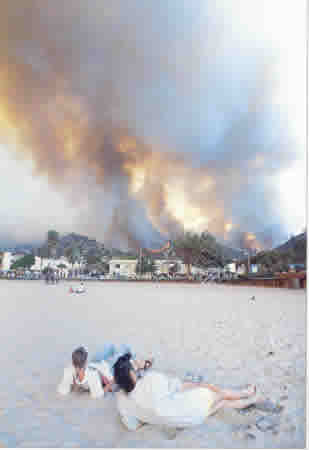
In natural ecosystems, fires ignite every 30 to 150 years. Yet over the last century, blazes in the Santa Ana Mountains and Laguna Coast have ignited far more frequently, devouring native plant communities faster than they can regrow and allowing fire-prone invasive species to flourish, a new study finds.
Unsurprisingly, roadways where people have access serve as ignition hotspots in both of the study regions. What specifically set off the wildfires, though, remains poorly documented, with most described as of unknown origin, according to “Understanding Fire Regimes in the Santa Ana Mountains and Laguna Coast,” which was released Thursday, Aug. 27.
Stepping up wildfire investigations, hardening roadway edges with barriers and de-energizing power lines during fierce winds are among the study’s recommendations.
Friends of Harbors, Beaches and Parks, of Newport Beach, undertook the study last October because frequent fires are changing a natural resource that the organization aims to conserve. The research aims to understand the impact of blazes in the two county areas that had remained unstudied in order to make fire-prevention recommendations, says the study’s introduction.
The topic hits home for the study’s principal author and researcher, Melanie Schlotterbeck, of Brea. During her years growing up in nearby Carbon Canyon, the threat of fire forced her family to evacuate a dozen times, including one summer when they fled five times, she remembered.
“We got really proficient at it, putting crystal in the pool,” she said. “As a kid, it was kind of fun.”
But there is little humor in the findings of the study, which the organization intends to distribute to city and county officials in the hope it will shape development policy and fire-protection practices.
“Where a fire has burned in the past, it will burn again. If you have that
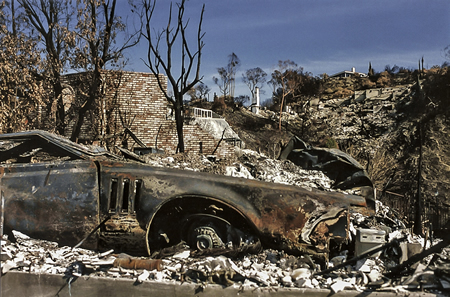
information, you should not be putting people in harm’s way,” Schlotterbeck said. “We’re not learning the lessons.”
In the 22,000-acre Laguna Coast, comprised of the Laguna Coast Wilderness Park and Crystal Cove State Park, rocky outcroppings are interspersed amid oak and sycamore woodlands and plant communities known as coastal sage scrub, grasslands and maritime chaparral.
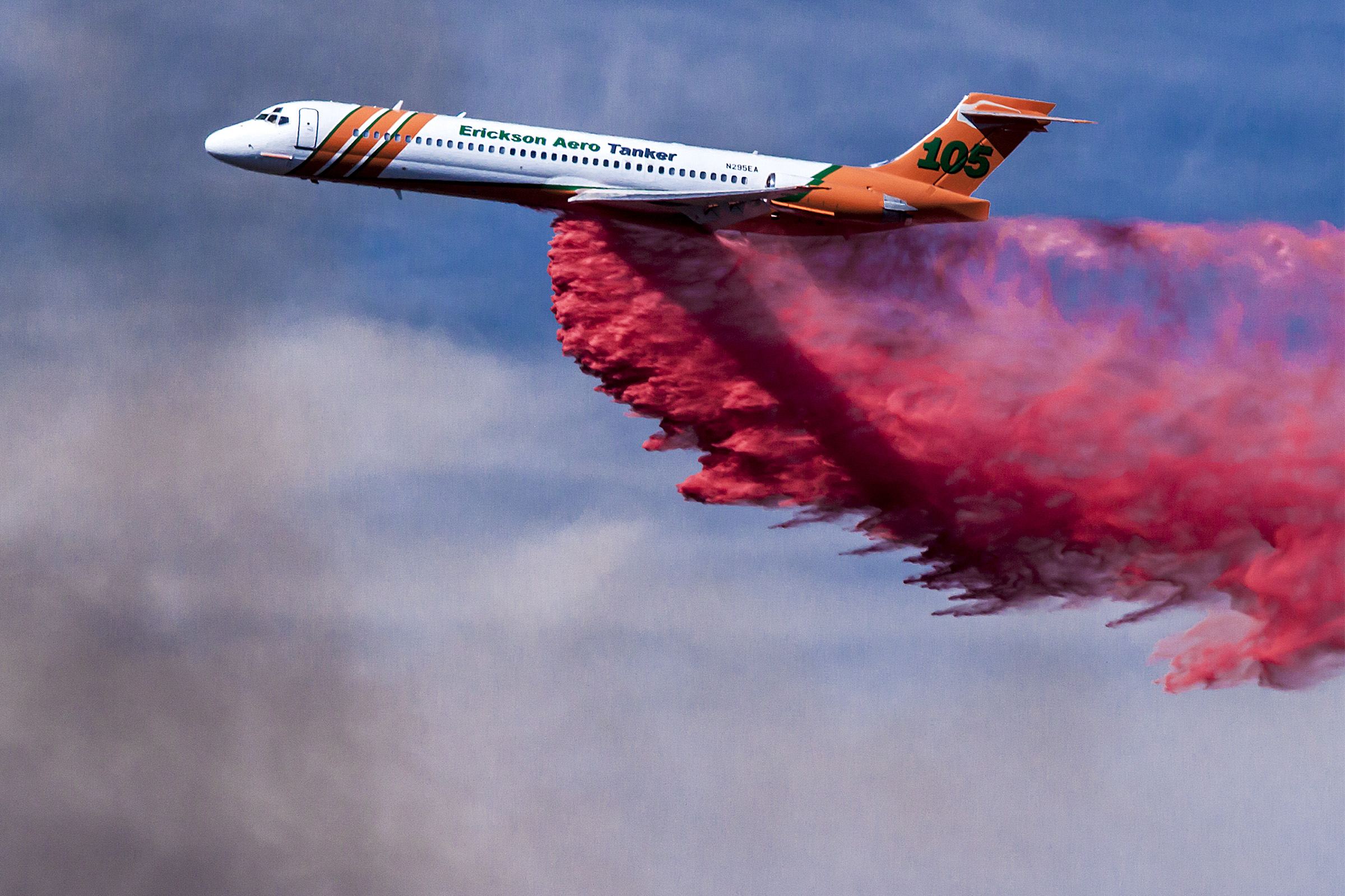
Photo by Mitch Ridder
Based on Orange County Fire Authority data, 21 separate blazes charred 18,000 acres in Laguna Coast over the past 100 years, including the 1993 firestorm that ravenously sped across 14,336 acres and destroyed 347 homes in 12 hours.
Three Laguna Coast fires were set by arsonists, three were sparked by power lines and 14 are of unknown origin, the study says.
In both study areas, fires most frequently occur in July or August, when onshore winds prevail, but the fires that explode out of control typically occur in October when Santa Ana winds howl from the north and other blazes burning elsewhere tax fire-fighting resources.
The firestorm of 22 years ago in Laguna Beach that required the evacuation of

the entire town resulted in some significant changes, including fire-protective building codes for new structures. The study suggests cities should also retrofit older homes for fire safety at the wildland-urban interface.
The study was less successful at quantifying fire’s impact on water quality, due partly to the recent drought as well as a lack of wildland monitoring stations. Most data is collected at waterways, which allows too many other potential sources of contamination from urban areas, Schlotterbeck said.



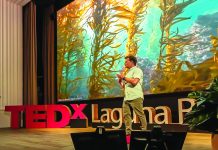
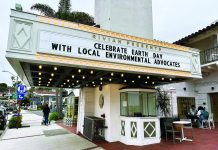
Water will put out a fire. Each day just 1.2 miles off of Laguna Beach, we discharge 10 million gallons of wasted wastewater. A network of recycled water pipes along Laguna Canyon and other high fire risk areas can properly hydrate native plants to diminish wildfire threats while also reducing erosion during storms. A separate local water supply system will be priceless when the next wildfire arrives. Contact the City Council and demand better local wildfire protection with recycled water consistent with the City’s Fire Department’s Fuel Modification Zone Guidelines…before the next fire. Learn more at: http://lagunabeachcity.net/civicax/filebank/blobdload.aspx?BlobID=8240
[…] on three sides by wilderness, fire factors are intensifying in Laguna Beach because the wildlands are drier than usual, LaTendresse said. “We’ve already […]